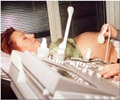Artificial intelligence (AI) that screens and detects diabetic retinopathy accurately 95.5 percent of the time will be soon affordable to the common masses.

‘Diabetic patients already outnumber practicing ophthalmologists in the United States, and unfortunately, that imbalance is only expected to grow.’
Read More..




The researchers present their study today at AAO 2019, the 123rd Annual Meeting of the American Academy of Ophthalmology.
The number of people in the United States with diabetes is exploding. Today, more than 30 million Americans have diabetes. One in four will develop diabetic retinopathy, which has become the leading cause of blindness among working-age Americans.Read More..
Diabetic retinopathy can develop over time in people with diabetes, especially when they have poor control over their blood sugar levels. High blood sugar can damage tiny blood vessels at the back of the eye. Sometimes, tiny bulges protrude from the blood vessels, leaking fluid and blood into the retina. This fluid can cause swelling or edema in an area of the retina that allows us to see clearly. At first, diabetic retinopathy may cause no symptoms or only mild vision problems. Eventually, it can cause blindness.
Ophthalmologists have effective treatments for diabetic retinopathy, but they work best when the condition is caught early. That’s why ophthalmologists recommend patients be screened every year. But as the number of Americans who require regular screening grows, ophthalmologists need an accurate, automated system that can identify patients who need to be seen for treatment.
A system called EyeArt has shown promise in earlier studies. But ophthalmologists want to be sure they can rely on it. To learn more, Srinivas Sadda, MD of the Doheny Eye Institute/UCLA and his colleagues across the United States, compared EyeArt against experts using the gold-standard grading system (ETDRS) as part of a pivotal trial.
EyeArt was used to screen 893 patients with diabetes at 15 different medical locations. Results were then reviewed for clinical accuracy by certified graders.
Advertisement
“Diabetic patients already outnumber practicing ophthalmologists in the United States, and unfortunately, that imbalance is only expected to grow,” Dr. Sadda said. “Accurate, real-time diagnosis holds great promise for the millions of patients living with diabetes. In addition to increased accessibility, a prompt diagnosis made possible with AI means identifying those at risk of blindness and getting them in front of an ophthalmologist for treatment before it is too late.”
Advertisement















